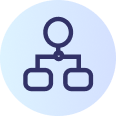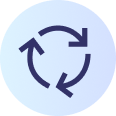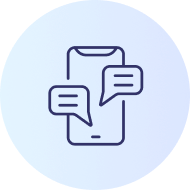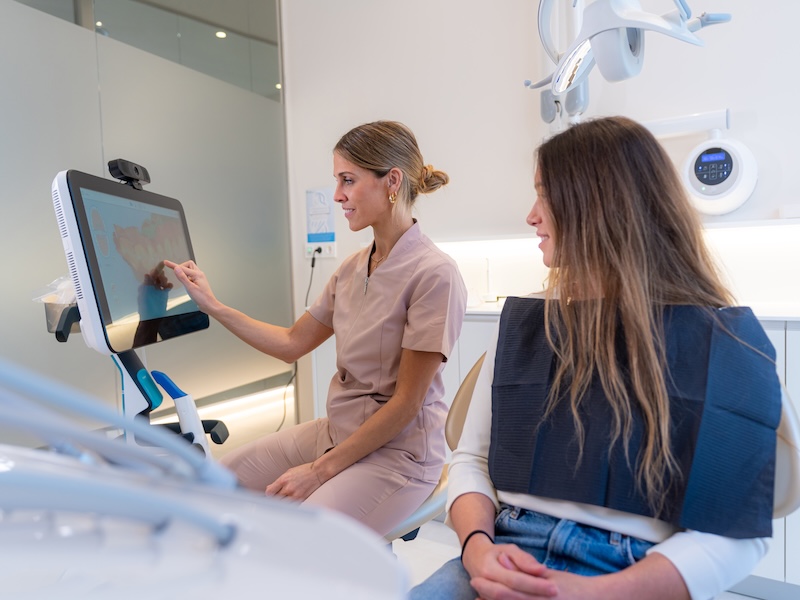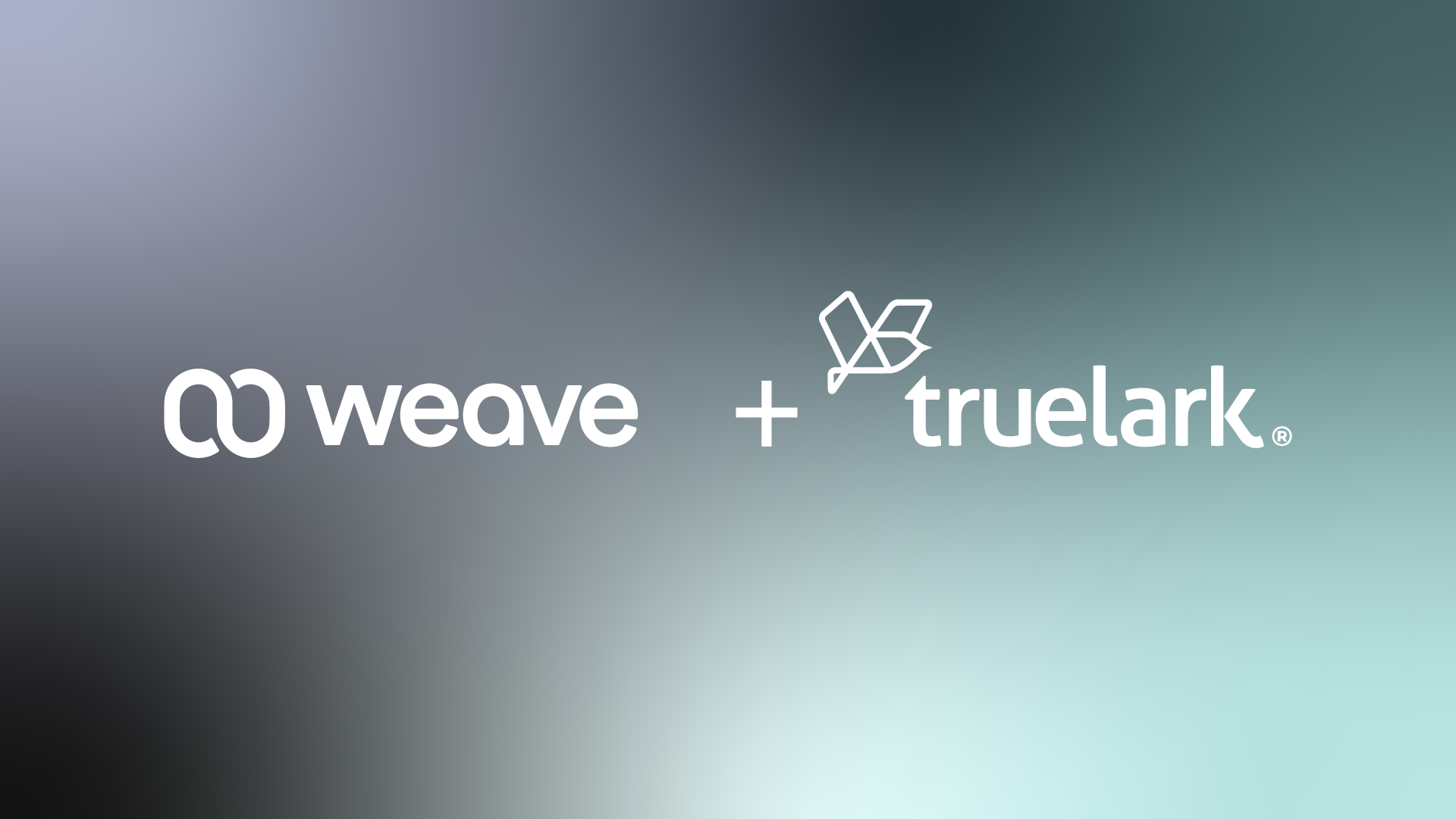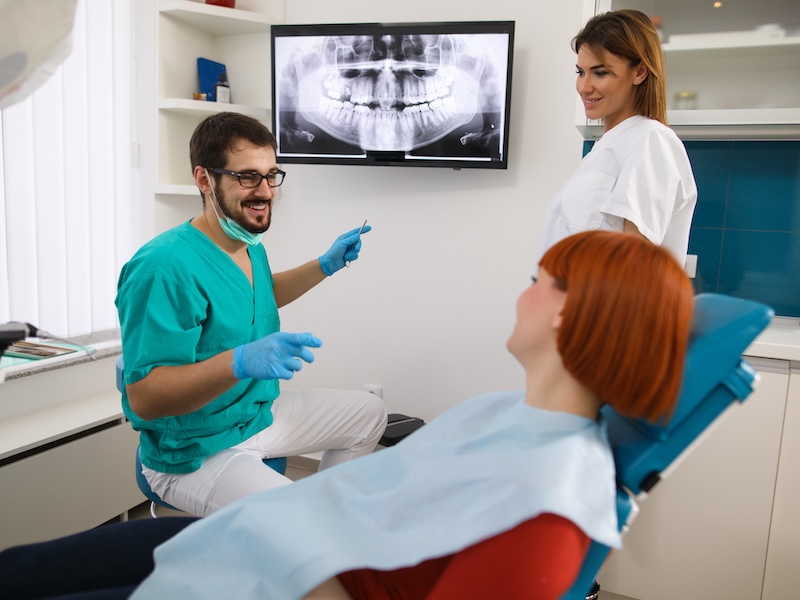The dental industry is undergoing a profound transformation, thanks to the rapid advancements in Artificial Intelligence (AI). From improving diagnostic accuracy to streamlining administrative tasks, AI is reinventing how dental practices operate and care for patients.
In this article, you’ll learn about the various applications of AI in dentistry, including imaging and diagnostics, treatment planning, robotics, preventative care, virtual reality, and administrative automation. We’ll explore how these innovations are impacting dental practices and paving the way for more precise, efficient, and patient-centered care.
Applications of AI in the dental industry
AI is showing up everywhere in dental practices, in both the treatment room and the front office. Let’s take a look at specific business functions where AI in dental industry is making an impact.
Dental Imaging and diagnostics
The application of AI in dentistry for imaging systems improves how dentists analyze radiographs, intraoral scans, and 3D images. Using machine learning algorithms, these systems process visual data with remarkable speed and accuracy, often detecting cavities, fractures, and potential tumors earlier than traditional methods. Some AI tools even predict future dental issues based on current imaging, enabling preventative care before problems escalate.
Beyond accuracy, AI streamlines workflows by automating the initial analysis, freeing dentists to focus on treatment planning and patient care. AI-assisted diagnostics also serve as a valuable second opinion, improving decision-making and reducing the risk of misdiagnosis.
Personalized dental treatment planning
AI is improving treatment planning by analyzing vast amounts of patient data to create tailored recommendations. These intelligent systems consider factors such as a patient’s medical history, genetic predispositions, lifestyle habits, and previous dental treatments to recommend the most effective course of action.
By leveraging machine learning algorithms, AI can predict treatment outcomes with increasing accuracy. This allows dentists to present patients with clear, data-driven options. Furthermore, AI can optimize treatment schedules, ensuring that each patient receives the right interventions at the most appropriate times.
The personalization enabled by AI in dentistry extends to material selection. For instance, AI can recommend the most suitable dental materials based on a patient’s bite force, allergies, and aesthetic preferences, improving treatment outcomes.
AI-powered robotics
AI-guided robotic systems are making dental procedures more precise and efficient, especially for complex surgeries. For example, the Yomi robotic system is the first FDA-cleared device designed to assist with dental implant procedures.
Yomi combines AI-driven treatment planning with robotic assistance during surgery. The system uses 3D scans of the patient’s mouth to create a detailed surgical plan. During the procedure, it provides real-time guidance to the dentist, ensuring precise implant placement while allowing the dentist to maintain full control.
There are multiple benefits of AI-powered robotics. These systems can reduce procedure times, minimize invasiveness, and improve the accuracy of implant placement. For patients, this means quicker recovery, less discomfort, and better long-term results. For dentists, it enhances precision and enables them to handle more complex cases with confidence.
Preventative and proactive care
AI automation for dentists is helping dentistry shift from reactive treatment to proactive prevention. By analyzing medical records, oral health history, and treatment outcomes, AI can spot patterns and risk factors for future dental problems.
These predictive models help dentists take early action. For example, AI may flag a patient at high risk for periodontal disease, advising more frequent cleanings or specialized care to prevent it. AI also tracks lifestyle factors like diet, smoking, and oral hygiene, providing personalized recommendations and dental reminder messages to help patients maintain better oral health.
Virtual and augmented reality
AI-powered virtual and augmented reality (VR/AR) are transforming patient education and clinical procedures in dentistry. These interactive tools create clear, engaging visualizations that improve patient understanding and provider precision.
For patients, VR/AR provides detailed 3D models of dental conditions and treatments, helping them better understand their oral health and proposed procedures. This clarity leads to a higher rate of treatment acceptance and improved treatment outcomes. In clinical settings, AR assists dentists by overlaying critical structures and implant positions in real time, improving accuracy and allowing for on-the-spot adjustments to ensure the best results.
Administrative automation and patient support
AI is making dental practice management more efficient by automating routine tasks and improving patient communication. AI-powered virtual assistants handle appointment scheduling, reminders, and follow-ups, helping reduce no-shows and keep operations running smoothly.
These systems also answer patient inquiries 24/7, providing quick responses about treatments, post-care, and billing—freeing staff to focus on in-office care. AI also streamlines billing and insurance, using machine learning to process claims faster, minimize errors, and speed up reimbursements, improving both workflow and financial stability.
Improving dentistry practices with TrueLark AI solutions
While many of the AI innovations reshaping dentistry focus on clinical advancements, the patient experience begins and ends with communication—and that’s where TrueLark stands apart. Our AI Control Center goes far beyond traditional chatbot or reminder tools. Built specifically for appointment-based businesses, TrueLark combines intelligent scheduling, automated outreach, and responsive patient support into a single, seamlessly integrated system.
TrueLark doesn’t just send appointment reminders or respond with templated messages. It engages in natural, two-way conversations that understand patient intent and complete real tasks—like rescheduling an appointment, answering a question about insurance, or even handling a follow-up triggered by a missed call. Our platform is driven by the same patented, agentic AI, ensuring consistency, context awareness, and autonomy across every patient touchpoint.
Because our AI is trained on over 10 million real interactions and millions of successful bookings, it delivers measurable results at scale. DSOs and dental practices using TrueLark report higher appointment completion rates, lower no-show rates, and faster response times—all without hiring additional staff or juggling multiple disconnected systems.
In short, while other AI tools focus on diagnostics or robotics, TrueLark helps dental teams deliver better care by making sure patients actually show up, stay informed, and feel supported throughout their journey. It’s not just AI—it’s AI that works for your entire front office.
Schedule a demo today and see TrueLark AI in action.



